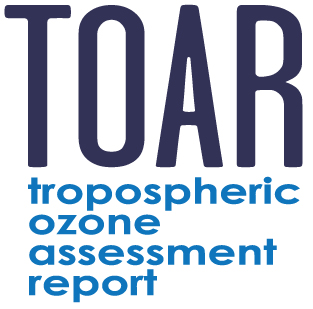Chemical Reanalysis Focus Working Group

Working Group leads: Kazuyuki Miyazaki, JPL, USA (kazuyuki.miyazaki @ jpl.nasa.gov)
Dylan Jones, University of Toronto, CA (dbj @ atmosp.physics.utoronto.ca)
TOAR-II Steering Committee liaison: Helen Worden, NCAR, USA (hmw @ ucar.edu)
Established: March 18, 2021
The Chemical Reanalysis Focus Working Group has the following objectives:
Chemical reanalysis is a systematic approach to create a long-term data record of atmospheric composition, consistent with model processes and observations, using data assimilation. Similar to meteorological reanalyses that have extensively been used to study weather and climate variability, chemical reanalysis has the great potential to provide comprehensive information on atmospheric composition variability in order to improve understanding of the processes controlling the atmospheric environment. Chemical reanalyses that include data assimilation of ozone and/or ozone precursors were not included in the first TOAR, but have made considerable progress in recent years and offer a unique global coverage of decadal ozone trends during the satellite data records including the COVID-19 era. Evaluation of chemical reanalyses with TOAR-II observations and other data, such as the ozonesonde record, will assess the potential of using reanalysis data for studying spatial gradients at both regional and global scales and trends in areas with sparse in-situ observations. The long-term record of meteorological and chemical conditions provided by the chemical reanalyses will also assist in determining the contribution of precursor emissions and changing meteorology to observed ozone trends and surface ozone exceedances.
This Focus Working Group will:
(1) Facilitate quality control processes and provide representativeness information of various observational measurements for the HEGIFTOM Focus Working Group.
(2) Provide observationally-constrained information on the relationship between surface/tropospheric ozone and its precursors while constraining other chemical environments, which will benefit Ozone and Precursors in the Tropics (OPT) Focus Working Group and the Tropospheric Ozone Precursors (TOP) Focus Working Group.
(3) Demonstrate the value of individual satellite measurements to study surface/tropospheric ozone, which will be shared with the Satellite Ozone Focus Working Group. Reanalysis products will also be used as transfer functions to inter-compare different satellite products and evaluate representativeness of individual satellite measurements.
(4) Use statistical methods proposed by the Statistics Focus Working Group.
(5) Reanalysis ozone over the oceans could still be largely driven by forecast model performance and could have limited implications for Ozone over the Oceans Focus Working Group. Nevertheless, reanalysis with free tropospheric ozone constraints would provide insight into the impact of tree tropospheric ozone on ozone budget over the oceans.